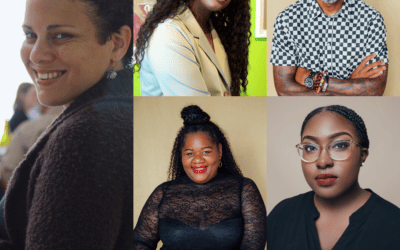
As Bahamians, our culture – like many others – is tied to the tongue. We love and loathe the oral traditions here, the fact that storytelling is what keeps much of our culture going but is also, sadly, how we lose much of the rich detail of the weaving of our history along the way.
However, there is another oral tradition we find ourselves rooted in: food. Taste, in all senses of the word, is in many ways how our region was shaped as an idyll and paradise. Exotic flavours and the growing sense of the Bahamas as a ‘civilised’ and restorative colony soon became the way we were known – topography aside. It is often said that scent is the strongest sense tied to memory, but taste can stir up the same nostalgia, and our tongue-ties and the flavours we know as our own.
Daniel Fernández Pascual and Alon Schwabe, the cultural studies minds behind ‘Cooking Sections’ and their most recent production ‘The Empire Remains Shop,’ are the two-man team that make up this London-based collective that digs into the intersection of food and politics. Having recently undertaken research in the region, Pascual and Schwabe took great interest in the various food practices and histories here: the marketing of lionfish in the Cayman Islands as a way to tackle the populations of the invasive species (much like we are doing here at home), or the way that countries like Barbados that were so replete with sugarcane plantations and so obviously able to sustain itself agriculturally are not able to do so now. The sugar industry in the Western Hemisphere has changed dramatically in the last few decades, with sugar prices declining, production halting and imports from Caribbean countries desperately trying to compete with larger markets who have precedence, leaving smaller nations like Barbados neatly out of the running.
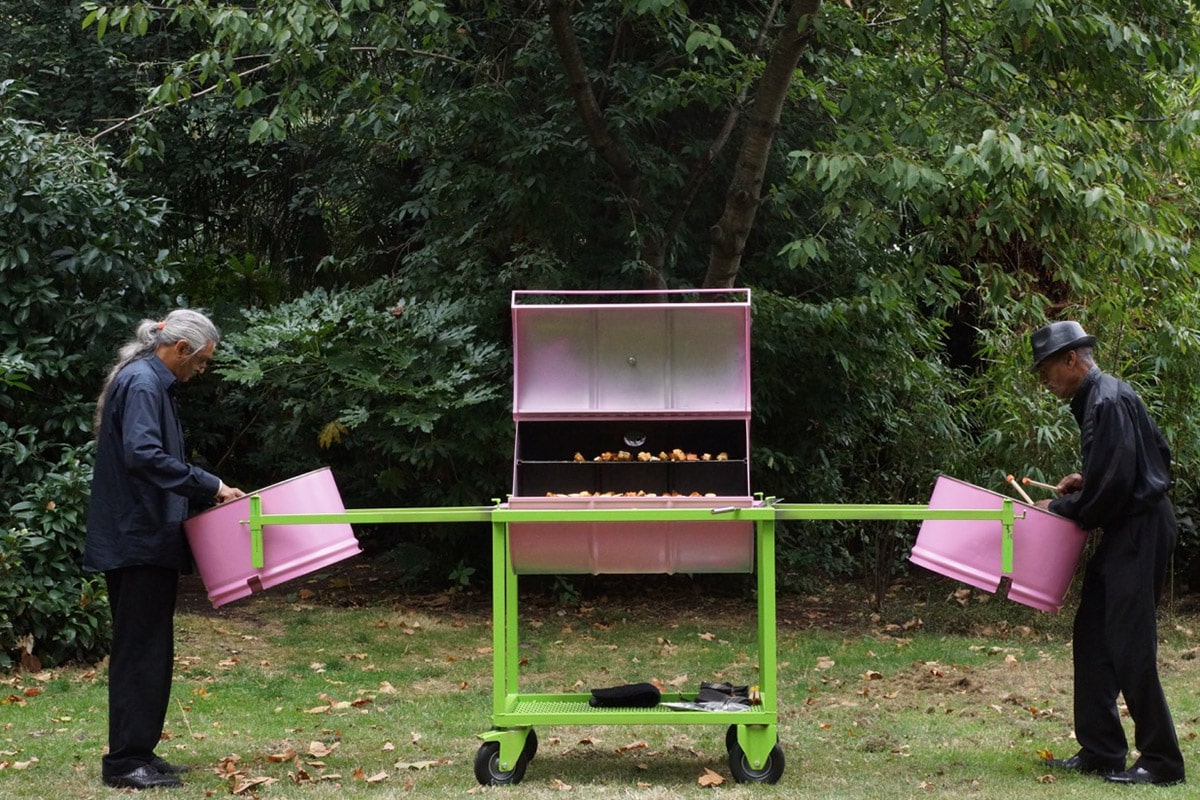
Pan men in London playing on ’55 Gallon’ (2016) by Blue Curry. Image credit Daniel Fernández Pascual.
It made sense then, that for their ‘Empire Remains Shop’ project they look to the Caribbean region as a network of former colonies with this shared history and our relationship to produce, crops and food. Through this, it became important for the curators to map the region finding artists working directly with the politics related to colonization and their after-effects and ideas of consumption and trade, and therefore leading to the work of Blue Curry (and no, not for his name).
The collective took a keen interest in why many Anglophone former colonies relied so heavily on imported food and given his interest in consumer culture it became a natural pairing to stir Curry into the mix. Curry’s practice deals critically with the representations of the region as a tourist destination and in particular ideas of consumerism and exoticism that surround this – usually by way of some brilliantly bright and garish, ‘so tacky it works’ kind of souvenir or other universally-recognized objects of tourism and the consumer sphere of leisure.
Part exhibition, part shop, part public intervention, the Empire Remains Shop is the manifestation of an unfulfilled initiative imagined in the 1920’s to introduce a series of shops selling goods from the Empire. The shops were intended to educate the British public on the number of exotic edible resources being shipped from the various colonies, and Cooking Sections’ modern reimagining of the concept provides such an apt context and lens through which to engage with Curry’s work. Focusing on the impact of the tourism industry, Curry’s practice deals with the direct result of how our history as a former British colony and the framing of The Bahamas as a tourist Eden has impeded our current understanding of self and nationhood.
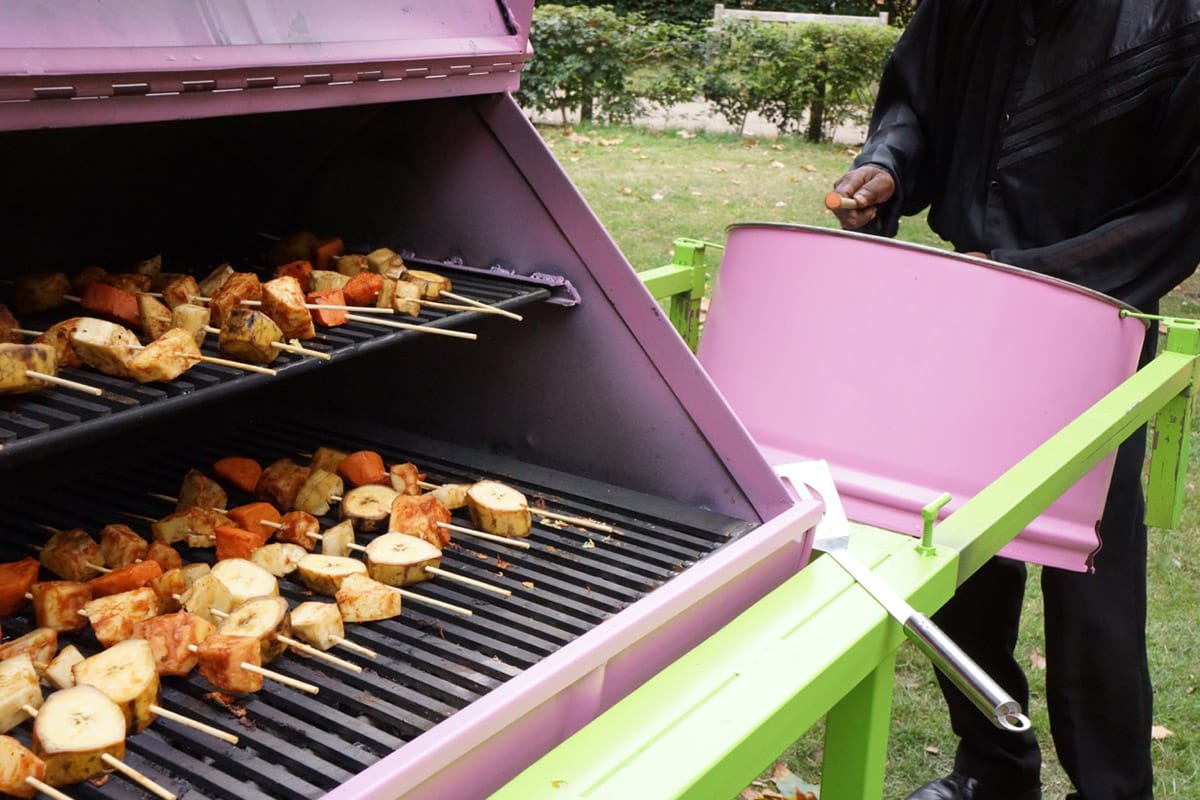
Blue Curry’s ’55 Gallon’ barbecue fired up. Image credit: Daniel Fernández Pascual.
Curry’s ‘55-Gallon’ works in a very self-reflexive, self-aware way, much like the rest of his body of work. The loud pink and green steel ‘transformer’ barbeque is, as he jokingly calls it, an “all-in-one entertainment experience”. The metal monster morphs from cooking apparatus to a musical instrument as easily as the work transitions from sculpture to performance and back again. Curry’s work has always easily transitioned critically between different issues and ideas – though using other sensory elements is perhaps a new addition to his repertoire.
“On a critical level, it is a multi-layered work which, like many things I do, can be taken on a very superficial level and enjoyed for what it is: which here is essentially a nice day in the park with music and food. Or you can look deeper to the layers and realise the work is doubling back on itself (and probably a few times again) and looking at a lot of very serious issues like the impact of the tourism industry on the Caribbean.”
Certainly, the work is not typical of his practice in its adoption of food, but it is indeed a prime example of the way he manages to carefully arrange different ideas in a complex but self-contained unit that speaks to the problems we often associate with tourism. This is quite ironically wrapped up in a shiny veneer of stereotypes and uses the very things it critiques to provide a form of critique, reflecting in on itself and back again: the exotic intrigue of this bright, fantastical looking object is what inspires people to want to spend time and experience this foreign object of leisure, while being the very thing it critiques.
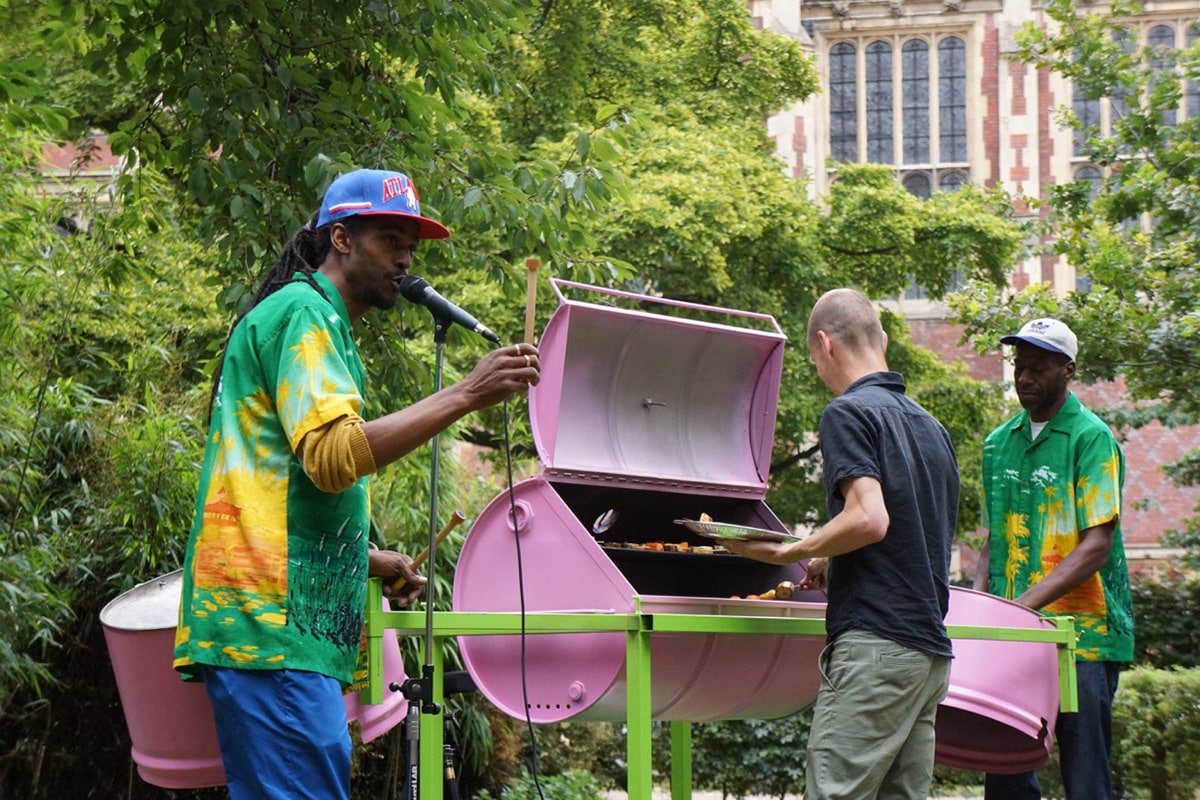
Blue Curry barbecuing yams, breadfruit, and plantain while award-winning calypso artist G-String sings to the crowd. Image credit: Daniel Fernández Pascual.
“Often I’m just stacking up all these cliches and pushing them together into one object, and the best thing to do is to just put it all in one place – so the oil drum is the same one we make the barbeques and the steel pans out of in The Bahamas, in Trinidad, throughout the Caribbean. So it is like an all-in-one entertainment experience, and it is so wrong its got to be right.”
And right it is. Though he deals explicitly with tourism and consumer culture, he still holds a great sense of integrity in the process of making sure that he holds a genuine interest in understanding everything about the subject or topic at hand: be it understanding the etymology of the word barbeque, or learning all the ins and outs of how to make the steelpan.
In working with Paris Bertrand, a revered steelpan maker and 40-year veteran of the Notting Hill Carnival scene, he quickly realised the difficulty in the public assuming that this novelty object of spectacle and intrigue would be seen as just that. When perhaps there are people who have such a reverence for the history and tradition of the steel pan, and could easily take his welding together of barbeque and steel pan from the same 55-gallon oil drums as blasphemy against their life’s work.
“My work is very research-heavy, I knew I needed to work with [Paris] because I was not just going to use any steel pan maker and not know everything I can know about the process. Otherwise, the work and process would feel false taking that history and trade on as my work.” Though Paris was certainly reluctant initially – though perhaps not as much as the several pan-makers who rejected Curry’s calls –, after sitting with the Pan man and showing a keen and genuine interest, the master maker was won over.
The contention around joining steel pans and barbeques together isn’t entirely to do with a lack of respect to the music. We all love the steelpan as a product of Trinidadian ingenuity, and the only instrument produced in the 20th century, out of industrial material/cast-offs no less. The steelpan is born of resourcefulness, yet we find ourselves unable to look to the resources we have available to us to sustain ourselves. Barbacoa, or barbequing, was typical of the Arawaks and the region’s indigenous peoples as a means of preparing food, but the practice was also used as a way to Other and to ostracise native peoples, to denote them as lesser and vulgar creatures than the refined European colonials. It is natural then, that the idea of sticking the beauty of the steelpan onto a barbeque – at once a symbol of barbarism and leisure cliches – might make things a little heated when working to get this composite metal creature built.
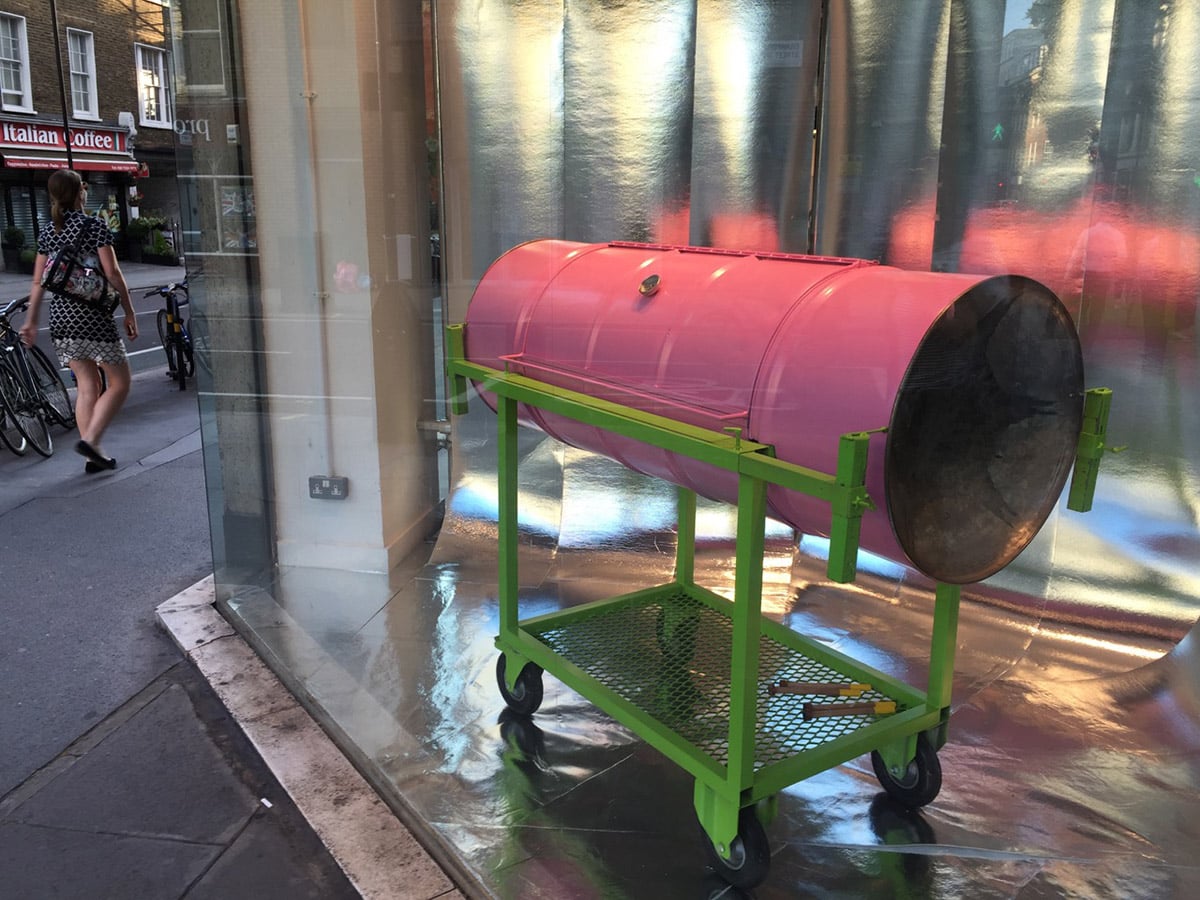
’55 Gallon’ (2016) by Blue Curry in the window of the Empire Remains Shop. Image credit: Daniel Fernández Pascual.
Words associated with the ‘uncivilised’ practices of natives during the Caribbean’s first wave of colonialism are now very much words we associate with relaxation and leisure. Barbeque, canoe, and hammock – all things that were merely everyday activities for the indigenous peoples are now things we do and use in our free time – and this is precisely why Curry looks to it in his work. He is concerned with food as a leisure activity, and the forked path that used oil drums take in the Caribbean towards being a mechanism of food production or of music production – all consumed by a public relaxing themselves, is what makes this interesting. The drum is at once an object we associate with energy and consumption in its intended purpose, as well as one of leisure in its second life as barbeques and steelpans. The oil drum barbeque is a common image to us, and heralds a sort of authenticity to the tourist experience of a cook-out on the beach, but Curry isn’t serving up hot-dogs. He uses common ground provisions (yams, cassava, plantain, breadfruit) from the Bahamas and Caribbean at large, things we can easily grow in our yards.
Again, the work seems to reflect back on itself in so many ways, but Curry does not shove this down our throats. He has of course provided a work that is as entertaining and enjoyable as it is bright, opening up a dialogue for serious discussion to dispel the cliches and stereotypes of this string of islands that is The Bahamas. A home which is often painted up and designed for everyone but its regular inhabitants. Soon, Curry will be coming back to the Caribbean, to Trinidad, to work as part of Alice Yard’s tenth-anniversary celebrations – and as a space known for its critical engagement and will be unpacking Caribbean subjectivity at large; we can look forward to even more focused research closer to us.
